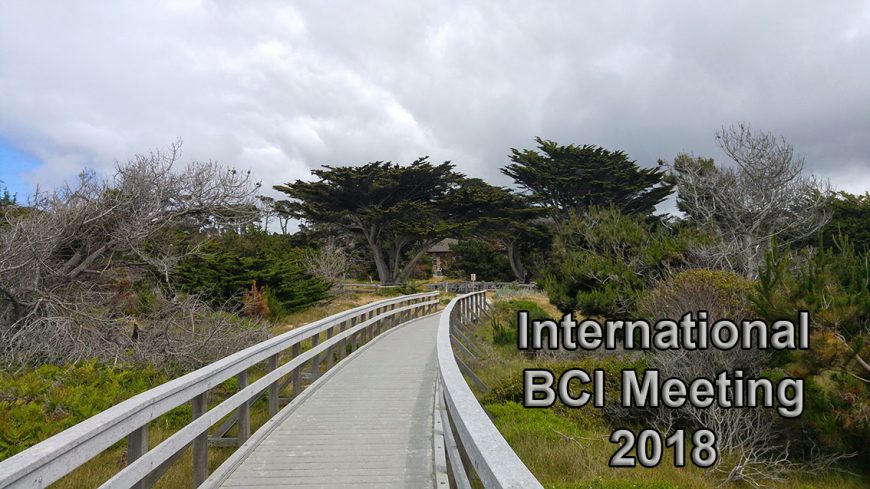A month ago, the BCI Meeting 2018 took place at Asilomar Conference Grounds (Pacific Grove, CA, USA). It was a great opportunity to meet my friends and colleagues of the Brain-Computer Interface community.
What’s up, BCI people ?
The Meeting is in fact a fast-growing international conference and since my last participation in 2016, I saw plenty of new faces new companies, and new projects. I felt a renewed enthusiasm carried by the fact that the field is going well. In my opinion, this 7th international Meeting on Brain-Computer Interface reached a milestone with the active presence of huge game-changers industries, namely but to exclusively Facebook and Google. Others shined by their absence (or discretion) such as Neuralink [for those who don’t know Neuralink, I recommend to check some videos of Elon Musk talking about “neural lace”]. I have a strong feeling that’s something positive is going on.
One of the most important thing that I saw was actually less about a specific research [some were incredibly interesting] but about the ecosystem and the synergies of the field. This year, we saw companies not only proposing new devices to record online one’s brain activity [e.g. compact dual EEG-fNIRS], we saw it flourishing with low-budget/high-quality devices [OpenBCI is now a growing start-up that can’t be ignored], and compelling software solution [Intheon propose now online processing and classification that can scale up].
The growing ecosystem
What I call “ecosystem” is the state where the interactions between research and companies are smooth enough to build something sustainable bigger that the field it-self. Some of the example of interactions I can think of is education : if you’ve been through the process of biomedical engineering studies, the access for recording device was somehow a struggle even in well reputed engineering universities. The reason was simple : you had only the choice between
- a fragile research-grade 50k€-a-piece-device was really unlikely to be freely accessible to a bunch of bold engineering students who could somehow turn into pieces to see if them can fit into the 3D-printed exoskeleton they just designed at home.
- a cheap consumer-grade noise/artifacts recorder, shaped and sold as EEG device, with no access to raw data, which made even a bunch of bold engineering students sad because an Arduino with the right setup can do the same for cheaper with more flexibility.
Now with the example of OpenBCI, for few hundred boxes, the students and teachers can have access to a great and highly flexible recording devices. Now with the example Intheon, you don’t even need to have a full developer team for several month to decentralized your classification methods into the cloud and you can even try at home (or for your student project).
So this area is quite exiting and I can’t wait to see what this is ecosystem will give birth to in two years.
The Mother of All BCI Benchmarks (MOABB)
My blog note is already that long but I can’t finish it without talking about one of the most-expected project in years for BCI classification [it was expected even before someone had the idea] : MOABB, the Mother Of All BCI Benchmarks ! The project was created on the impulsion of my friend Alexandre Barachand who was joined by another friend, Vinay Jayaram, and they received the enthusiasm support of the international NeuroTechX community. This subject need probably a blog note on this own, so check their GitHub or paper [pre-print] if you want to know more about it.
DISCLAIMER : the travel fees were supported by AlayaTec [Palo Alto, CA]. I hope to engage a collaboration with them soon.
